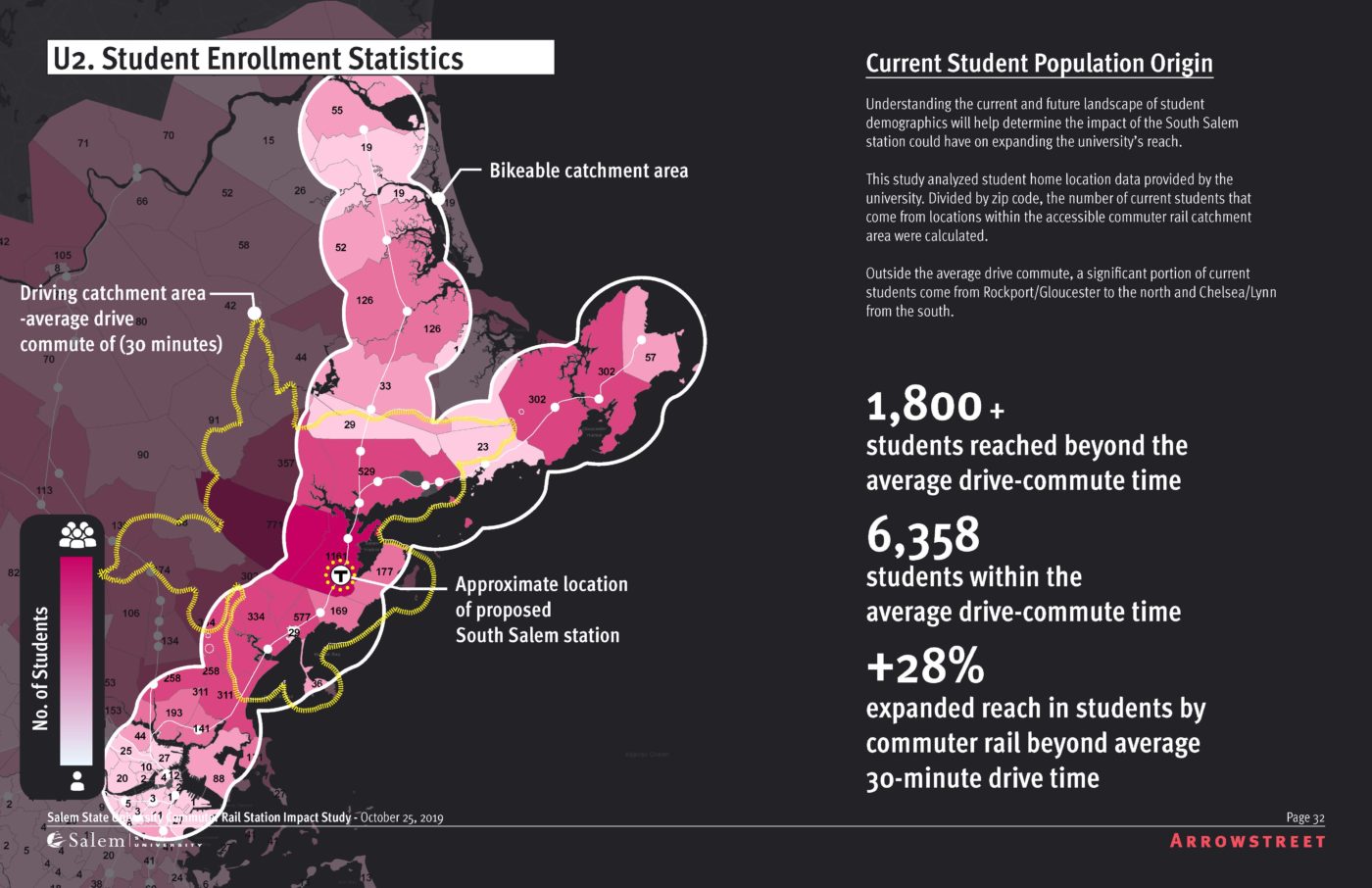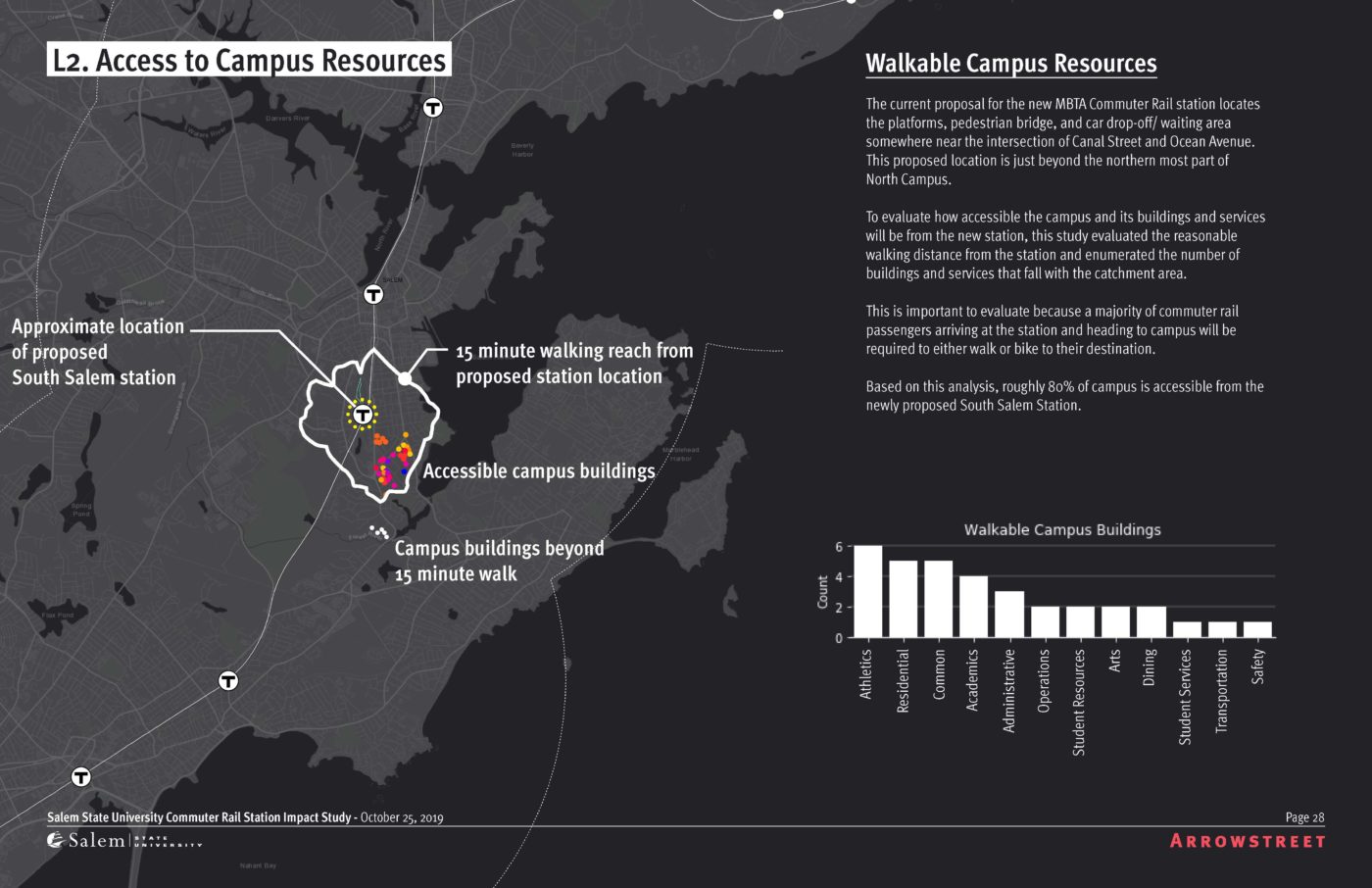





Identifying the opportunities and challenges of expanding transit infrastructure and its anticipated impacts on campus life.
Arrowstreet was hired by Salem State University to prepare an impact study regarding the university’s regional transit infrastructure. Arrowstreet structured this study with Salem State University to provide research and recommendations to the University leadership and offer additional resources to supplement the past work already completed on the subject. The ultimate goal was to help the university identify and understand the possible impacts of new mobility infrastructure on campus life and the university as a business.
As a whole, national post-secondary student enrollment has been decreasing at a rate between 1% and 2% annually since the Fall semester of 2015. And while public 2-and 4-year institutions have fared slightly better than private institutions, they are still seeing declining enrollments. Massachusetts institutions aren’t immune–seeing a decline in enrollment by as much as 3.9% since Spring 2016.
To address this decline in enrollment and reach a broader demographic, Salem State University leadership is considered partnering with the City of Salem and MassDOT to invest in new mobility options adjacent to campus. The goals in building new mobility-adjacent to campus are to increase access to the university for all students, especially those that don’t have access to a private vehicle, attract new students, reduce dependence on private vehicles in an effort to be more sustainable, and ultimately position the university as a leading post-secondary public institution in Massachusetts.
The outcomes of the impact study focused around three specific recommendations to the university:
- Continue to support the expansion and connection of the Salem bike path and work with the MBTA to install Zagster bike sharing docks at the new station while supporting other micro-mobility options.
- Special attention should be given to the economic development and planning of the portion of Canal Street adjacent to the station. This is crucial in making the station seem friendly and usable as a destination, especially when compared to the existing context of industrial lots that border the site.
- In order to tap into the expanded network of prospective students that live beyond the average drive commute, the university needs to invest in marketing the school’s brand as being synonymous with public transit access. And it will be important for this brand to be communicated to students early on in their search for post-secondary education, before they make their commuting decisions.
Project Details
LOCATION
SALEM, MA
client/owner
Salem State University